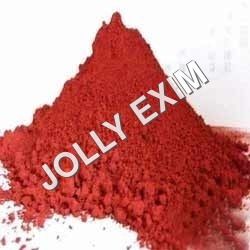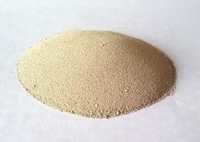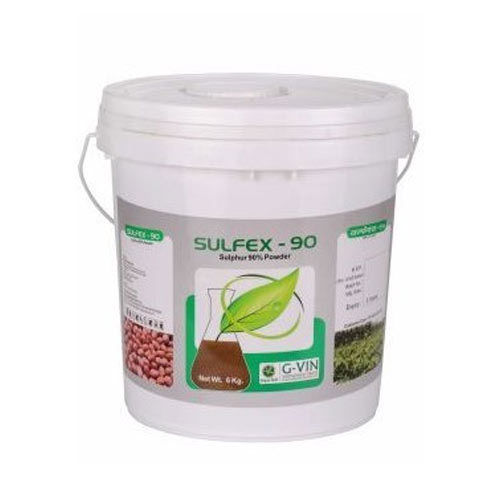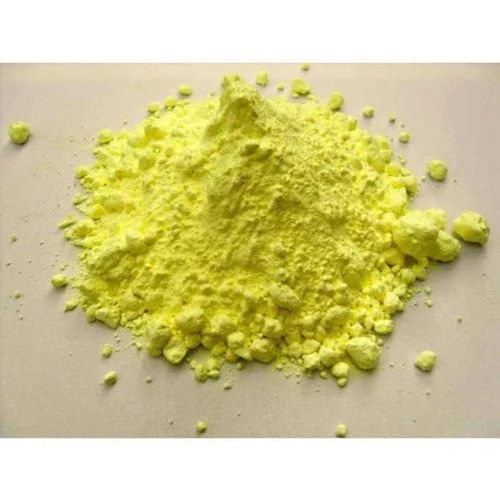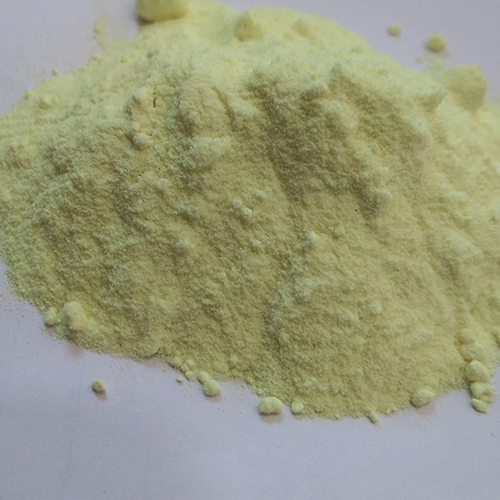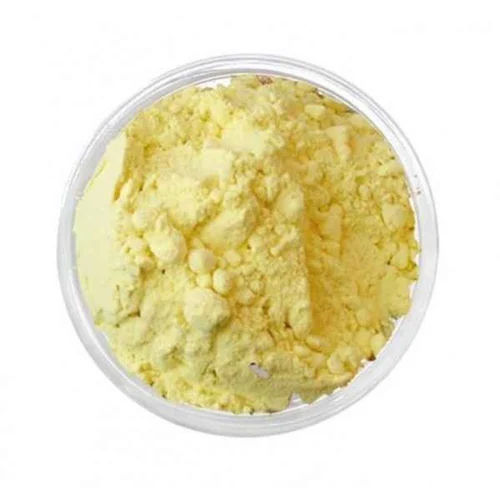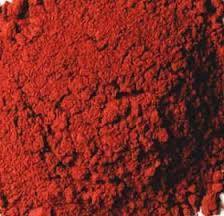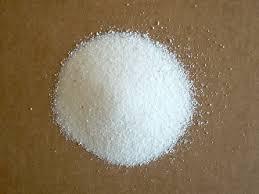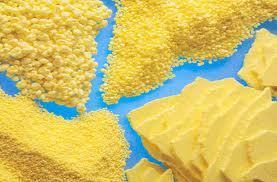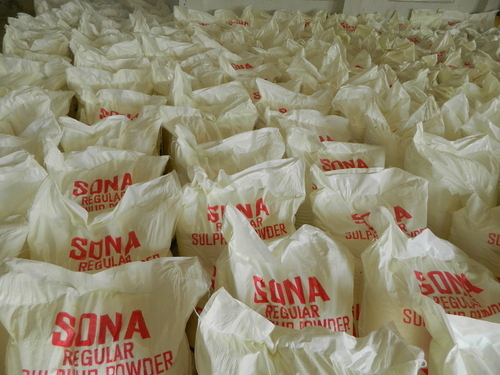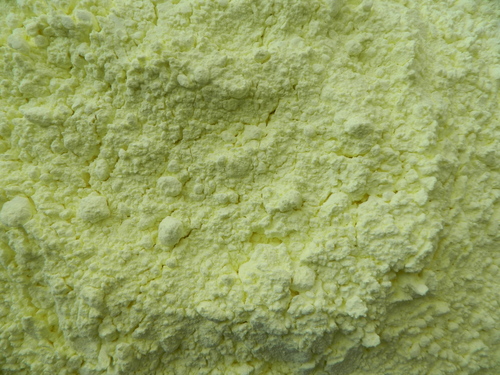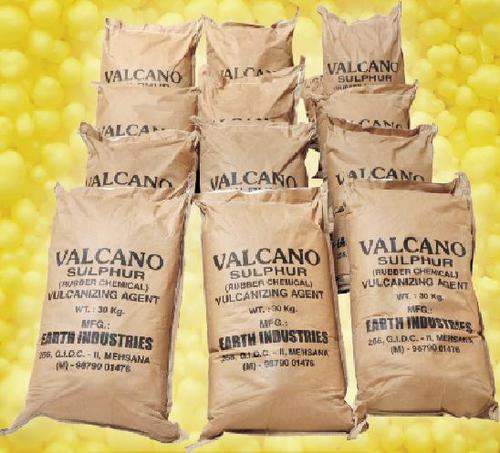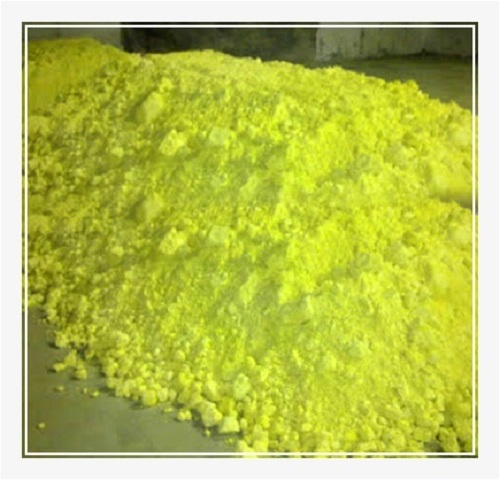Red Sulphur Powder :-Product Information :-CAS No. 7704-34-9 Chemical Name: Sulfur Synonyms: That;This;COSAN;Imber;Manox;Solfa;Suffa;Svovl;Thion;SULFUR CBNumber: CB0854287 Molecular Formula: S8 Formula Weight: 256.52 MOL File: 7704-34-9.mol Sulfur Property mp : 114 C bp : 445 C density : 2.36 vapor density : 8.9 (vs air) vapor pressure : 1 mm Hg ( 183.8 C) Fp : 168 C form : powder Water Solubility : Insoluble Merck : 13,9059 / 13,9067 CAS DataBase Reference: 7704-34-9(CAS DataBase Reference) NIST Chemistry Reference: Sulfur atom(7704-34-9) EPA Substance Registry System: Sulfur(7704-34-9) Safety Hazard Codes : F Risk Statements : 11 Safety Statements : 16-26 RIDADR : UN 1350 4.1/PG 3 WGK Germany : 1 RTECS : WS4250000 HazardClass : 4.1 PackingGroup : III HS Code : 28020000 Hazardous Substances Data: 7704-34-9(Hazardous Substances Data) China Buyers for HS Code "9405" Overview Sulfur belongs to the chalcogen family. Other members of the family are oxygen, selenium, tellurium, and polonium. These elements make up Group 16 (VIA) of the periodic table. The periodic table is a chart that shows how chemical elements are related to each other. The term chalcogen comes from two Greek words meaning "ore forming." An ore is a naturally occurring mineral used as a source for an element. Many ores are compounds of a metal and oxygen or a metal and sulfur. Compounds that contain two elements, one of which is sulfur, are called sulfides. For example, a beautiful gold-colored mineral is called pyrite, or "fool's gold," because it looks so much like real gold. Pyrite is iron sulfide (FeS 2 ). Sulfur was known to ancient peoples. Its physical and chemical properties are very distinctive. It often occurs as a brilliant yellow powder. When it burns, it produces a clear blue flame and a very strong odor. SYMBOL S ATOMIC NUMBER 16 ATOMIC MASS 32.064 FAMILY Group 16 (VIA)Chalcogen PRONUNCIATION SUL-fur Sulfur, also spelled as sulphur, is a very important element in today's world. Its most important use is in the manufacture of sulfuric acid (H 2 SO 4 ). There is more sulfuric acid made than any other chemical in the world. It has an enormous number of important uses. Discovery and naming Sulfur must have been well known to ancient peoples. They sometimes referred to it as brimstone. Sulfur sometimes occurs in bright yellow layers on the top of the earth. It has a sharp, offensive odor. When it burns, it gives off a strong, suffocating smell. The odor is like that produced when a match is struck. Physical properties Sulfur exists in two allotropic forms. Allotropes are forms of an element with different physical and chemical properties. The two forms of sulfur are known as -form and -form (the Greek letters alpha and beta, respectively). Both allotropes are yellow, with the -form a brighter yellow and the -form a paler, whitish-yellow. The -form changes to the -form at about 94.5C (202F). The -form can be melted at 112.8C (235.0F) if it is heated quickly. The -form has a melting point of 119C (246F). The boiling point of the -form is 444.6C (832.3F). The two allotropes have densities of 2.06 grams per cubic centimeter (-form) and 1.96 grams per cubic centimeter (-form). Neither allotrope will dissolve in water.
